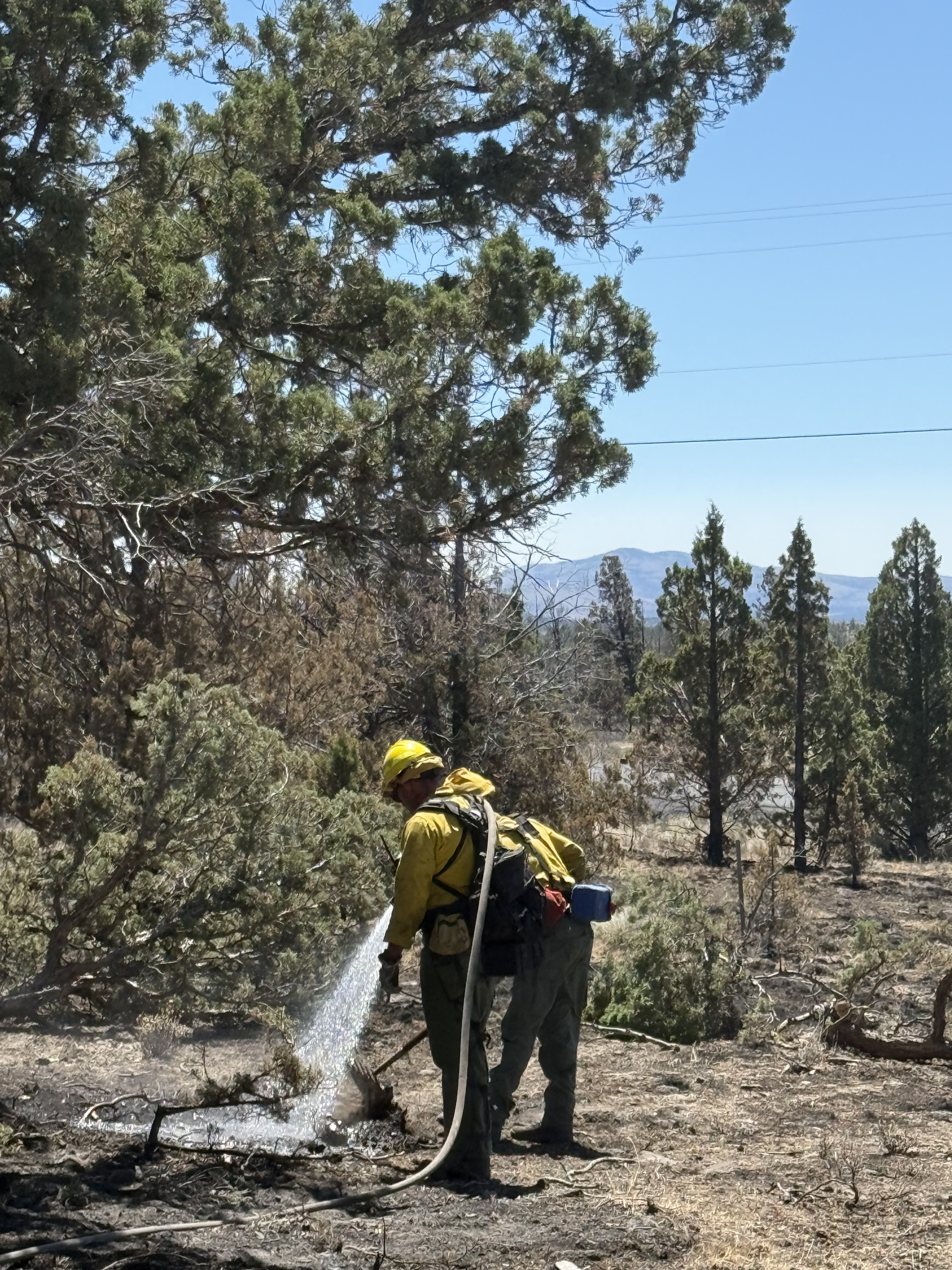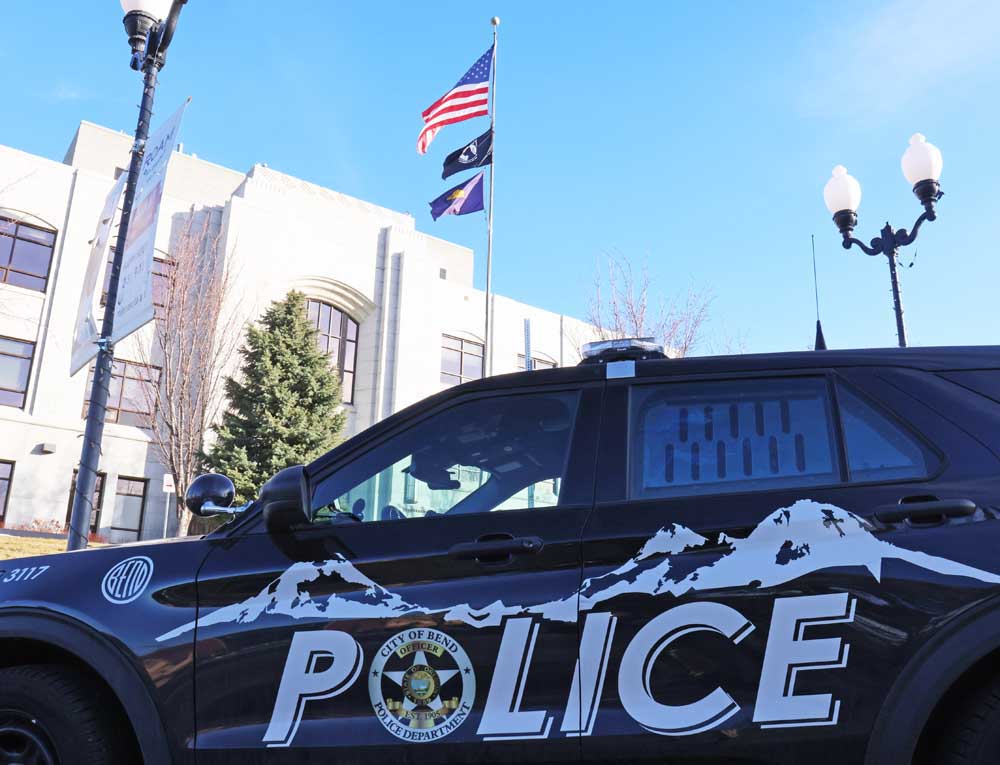Pioneer orchard still growing
Published 5:00 am Tuesday, August 7, 2012
Jerry Ramsey climbed over a barbed-wire fence on the northeast slope of Gray Butte and walked over to a tree his great-grandparents, Julius and Sarah McCoin, planted when they settled in the area almost 120 years ago. Its branches, full of quarter-sized fruit, dangled toward the ground.
“We don’t have any idea what some of these trees are,” said Ramsey, president of the Jefferson County Historical Society and an expert when it comes to local lore. He said most of the trees produce either red or yellow apples, “but that doesn’t tell us anything.”
Trending
On Aug. 18, Ramsey will guide members of the historical society and the Home Orchard Society, a Portland-based group of amateur arborists, on a tour of the McCoin Orchard and another homestead orchard planted near what is now the Crooked River Grassland’s Cyrus Horse Camp. He hopes the tour will shed some light on what type of trees are in the orchards and how they’ve stayed in production for so many years (see “About the tour,” Page B6).
“Obviously those are some pretty hardy trees,” said Joanie Cooper, president of the Home Orchard Society, which also aims to preserve the pioneer orchards of the Pacific Northwest. “I just hope there’s no expectation (that) we can go into the orchard, look up at their branches and tell you what kind of trees they are.”
Settlers from the late 1800s and early 1900s depended on fruit orchards to feed their families, according to the Oregon Parks and Recreation Department. They planted many varieties to ensure a long harvest season. Many of these orchards still exist today.
The homesteaders
In 1877, Julius and Sarah McCoin and their 2-year-old son, Numa, left Kansas, where his family had lived for a couple years after fleeing the Union Army’s advance through Georgia in 1864. Ramsey said the family spent five years traveling through San Francisco, Portland and McMinnville before they settled briefly with family members who lived on the west side of Goose Lake in Southern Oregon.
The couple had two daughters — Minnie and Ramsey’s grandmother Ella — before they moved north in September 1882 to Crook County’s Haystack community, where they stayed on a homestead owned by Sarah’s older brother. They also lived in a log cabin north of Prineville that is still standing, Ramsey said.
Trending
In spring 1886, the family moved to a 160-acre tract with a well-functioning spring on Gray Butte’s northeast slope. They claimed the land under the federal Homestead Act. Walter, their fourth and youngest child, was born that summer.
“This whole area was claimed,” Ramsey said as he drove south on U.S. Highway 26 from Madras into what is now the Crooked River National Grassland, an area that is almost devoid of structures except for a few old silos, water troughs and recreational facilities used by hikers, horseback riders and mountain bikers across its open terrain.
Ramsey said the people who settled in the area surrounding Gray Butte built homes, planted crops, set up businesses, and built an elementary school that was about 9 miles from the McCoins’ home. But the homesteading boom came to an abrupt end in the 1930s when a 10-year drought made it all but impossible for people to sustain themselves on their land.
Because the homesteaders, many of whom were also struggling from the effects of the Great Depression, couldn’t support themselves, they stopped paying their taxes and in some cases simply walked away from their land. It was at this point that the federal government stepped in.
Using a series of laws it passed during the New Deal era, the Roosevelt administration effectively ended homesteading and created a mechanism where the federal government could either buy or seize marginal lands that were no longer productive. Ramsey said the Civilian Conservation Corps then moved in and demolished whatever structures the homesteaders built near Gray Butte so the land could be used for cattle grazing.
Julius McCoin died in 1928 after watching his children grow up and start families of their own. His youngest son, Walter, managed the property for four more years before he sold it to the federal government for $1,200 in 1934 and started his own ranch near Terrebonne. All that’s left of the family’s homestead is a stand of poplar trees that were used as a windbreak for their second house, and the orchard.
The orchard
During the late 1880s, Julius McCoin started a freight-hauling business that used horses to carry wagon loads of wool, timber and other goods from Prineville to The Dalles and return with whatever merchandise and supplies the people who lived in the area could not make for themselves.
Ramsey said McCoin continued making these trips after his wife, Sarah, died in 1888, even though it meant his youngest children — who were 9, 6, and 3 years old at the time — had to fend for themselves during the two-week stretches he was out on the road. During this time, McCoin started picking up fruit tree starts from The Dalles and planting them near a stream that ran by where he built the family’s second house.
Ramsey said the McCoin children would pick the fruit, a mixture of summer apples, fall apples and pears, can and eat them while McCoin was hauling freight loads.
Surrounded by a barbed-wire fence, the McCoin Orchard contains more than 100 fruit trees spread out over three to five acres in the Crooked River National Grassland near the Gray Butte trailhead. The orchard’s fruit trees more than likely would have gone dormant, Ramsey said, had it not been for an unknown person or group of people who pruned them in the 1960s.
“Whoever it was, they knew what they were doing,” said Ramsey, who hopes to also identify the pruners.
But first, identifying the trees may prove to be difficult, said Cooper, who estimates there are 100 species of apple trees that are “commonly found” in Oregon and a couple hundred more that have been found only in remote areas. She said Oregon has this type of diversity in its fruit because the people who settled here during the 1800s came from all over the U.S. and brought along the types of fruit trees they knew best.
Cooper said she’s been interested in the McCoin Orchard ever since Ramsey sent her a couple of shrivelled up apples he picked from its trees this past fall. She hopes to identify what types of trees they are — a process she’s certain will take a while — and wants to take samples of them so they can be propagated and planted in other parts of the state.
But what Cooper finds most interesting about the McCoin Orchard — along with a pair of orchards Enoch and Mary Cyrus likely planted when they settled on a Homestead Act claim about 2 1/2 miles north of the McCoin homestead — is its size and the fact it has been left alone for so long.
While it’s likely the state’s early settlers planted hundreds of orchards like those of the McCoin and Cyrus families, it’s rare to find one still intact, let alone one as big as those two properties. Typically, when the Home Orchard Society comes across a homestead orchard all that’s left is a single tree, Cooper said.
“This will be fun,” she said. “We’re really interested in historic orchards and when we find one we get very excited about it.”








